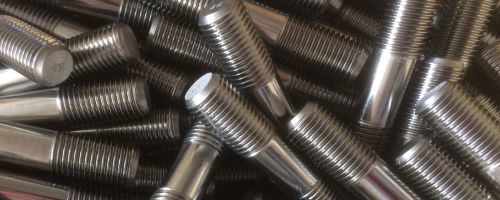Anchor Bolts
Anchor Bolts
Connecting structural and non-structural components to concrete is done with anchor bolts. Anchor bolts (also known as fasteners), steel plates, or stiffeners are just a few examples of the various parts that can be used to create the connection. Tension and shear forces are two basic types of loads that anchor bolts can convey.
Steel columns fastened to a reinforced concrete foundation can be used to depict a connection between structural elements. The connection between a facade system and a reinforced concrete wall is a typical example of a non-structural element that is joined to a structural one.
The fastener's hole is just a little bit bigger. The anchor is then properly put into the hole. The embedment depth is the depth to which the anchor pierces the base material. Mechanical anchor fasteners and chemical anchor fasteners are the two types of anchor fasteners.
Mechanical anchor fastener
Friction is used by mechanical anchor fasteners to anchor themselves. When pressed into the hole, it is designed to enlarge in diameter. This expansion causes the anchor to be firmly jammed in place by tightly gripping the base material. There are many different types of anchors available today to suit various uses. Each of the two categories of mechanical anchors Cast-in-place and Drilled-in anchor fasteners is described below.
Mechanically expanding anchors can be immediately loaded. Expanding anchors made of steel are often more heat- or fire-resistant. They can be further divided into two groups: displacement controlled, which is inserted into the hole and secured by applying a specific torque to the bolt head or nut with a torque wrench, and torque-controlled, which consists of an expansion sleeve and a conical expansion plug and is internally threaded to accept a threaded element.
Clamping Anchors
Clamping anchors are used to secure insulated cables with two or four cores and equal cross-sectional areas. The clamp is meant to prevent damage to the cable insulation and is tightened by bolting. The device is compatible with many styles of hook bolts.
Concrete Rod
Concrete wedge anchors function by being inserted into a hole that has been bored into the concrete. After that, the concrete wedge anchor is extended and firmly inserted into the concrete. These are offered in hot-dipped galvanised steel for the majority of outdoor applications and zinc-plated carbon steel for dry inside applications. This anchor's reliable application and maintenance assist to avoid corrosion in dry areas.
Anchor Rods
To support light poles, traffic signal poles, structural steel columns, and structures for highway signs, anchor rods are placed in concrete foundations. In an existing concrete slab, anchor rods can be post-installed or cast in place. Depending on the application, they are easily accessible as stock products or can be produced to match a range of ASTM grades and specifications.
If You are looking for high quality Anchor Bolts then Click below. DC engineering is One of the Prominent Fasteners Manufacturers in India. We are Anchor Bolt Manufacture Using high quality materials. We Produce as per requirement.


Comments
Post a Comment